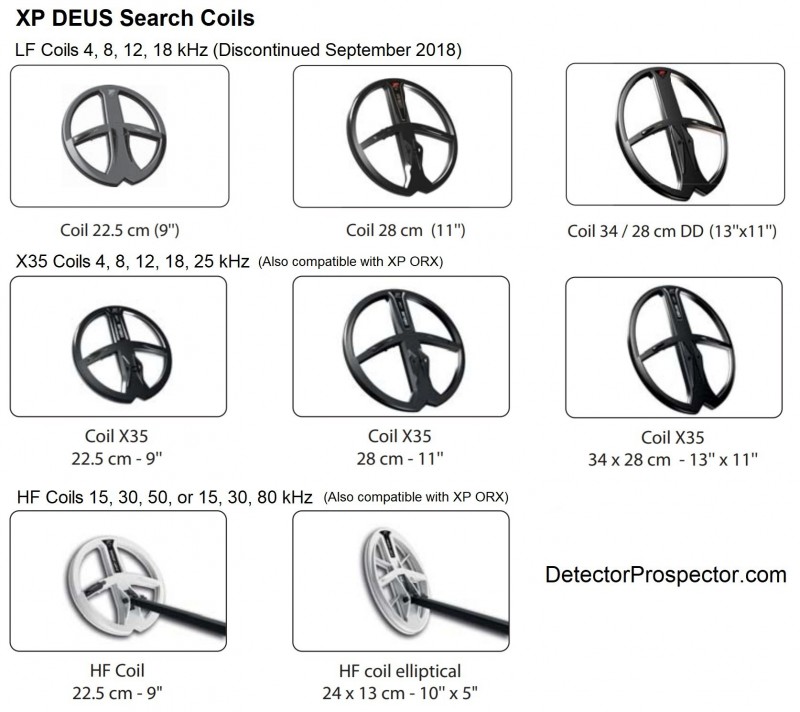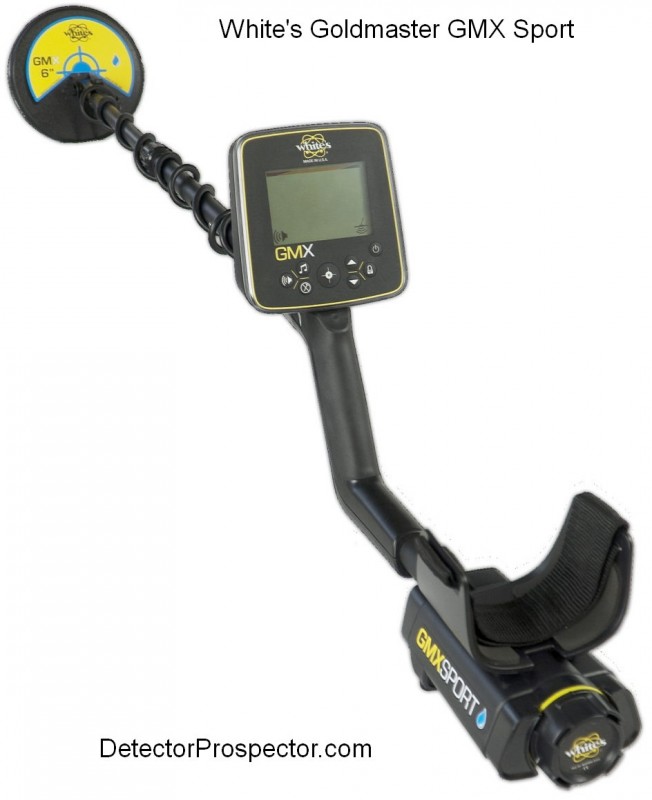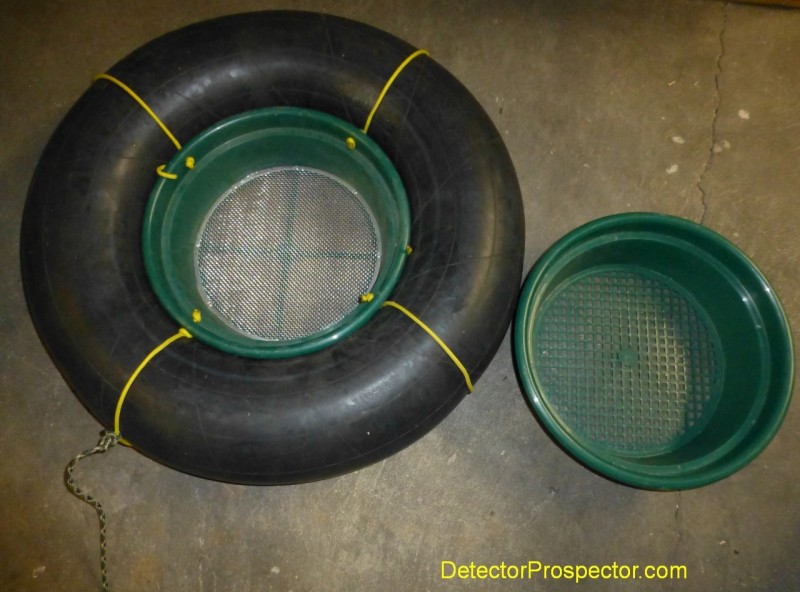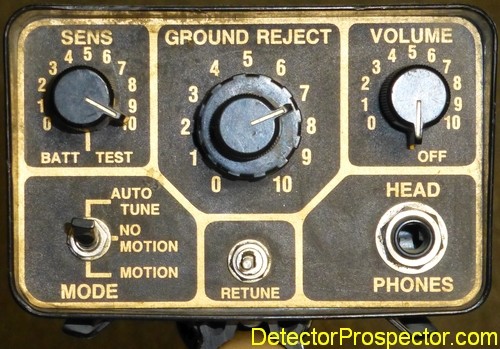-
Posts
19,760 -
Joined
Content Type
Forums
Detector Prospector Home
Detector Database
Downloads
Everything posted by Steve Herschbach
-

XP Deus / Orx Coil Roundup
Steve Herschbach replied to Steve Herschbach's topic in XP Metal Detectors
There seemed to be no one place where all the coils are listed, and XP was pretty quiet about the LF coils going away, so I have to admit I was not too clear on the current situation myself. It was as much for my own edification as anything. -
I have to be honest and say something seems odd about all this Rick. Given your original excited post about unboxing videos and such it sure fizzled out quick. I understand you were not well for a time, but it also seems there was no rush to return the detector to FT so quickly if it’s just going to sit there waiting to be updated. I know if I had had my hands on the detector it would have been like any other detector I’ve got my hands on. Closeup good photos of the machine from every angle possible, including coil, battery, and rod as separate items. Weights and lengths on all components, etc. There is a lot that you could have shared about the machine without it ever leaving your house. See my Nokta/Makro Gold Kruzer Review of an example of what I am talking about. And while you don’t live at the beach, no air tests on coins? No tests on a buried nickel? It just all seems weird to me that you had this machine in your hands, and then so little ultimately was said before you sent it back to FT. You get this first example of a long anticipated detector, and basically just post a couple pictures of it and send it back? I can’t help but get the feeling there is more to the story than you are letting on here. I’m not questioning your word on anything you have said at all. I’m just wondering why so little has been said. The lack of any more photos is especially puzzling to me. It’s like you were all excited, literally a kid with a new toy under the Christmas tree wanting to tell everyone about it, and then completely lost interest in sharing about the new toy.
-

New Minelab Pi Announcement Date 2020
Steve Herschbach replied to nugget hunter nz's topic in Minelab Metal Detectors
Me. Think CTX 3030 and Equinox. Was anyone interested in paying for a lighter housing and a little bit of new tech on a machine that's already essentially out there? I ditched my CTX 3030 the minute I got my hands on an Equinox. I also have an iPhone now instead of a rotary phone, but I am sure my iPhone is no better at making phone calls. -

January Gold From The Chesapeake Bay (15)
Steve Herschbach replied to Joe Beechnut OBN's topic in Metal Detecting For Jewelry
Man Joe, you are killing it - good for you! What is your theory of the similarity of the insignia rings? It's like an entire ring set in different sizes. What are the letters? They are so stylized I can't really make them out. Very interesting. -
XP DEUS / XP ORX Search Coil Chart Low Frequency (LF) Search Coils 4, 8, 12, 18 kHz 9" round, 11" round, 13" x 11" (discontinued September 2018) XP DEUS Only X35 Search Coils 4, 8 ,12 ,18, 25 kHz 9" round, 11" round, 13" x 11" XP DEUS and XP ORX High Frequency (HF) Search Coils 9" round 15, 30, 50 kHz and 10" x 5" 15, 30, 80 kHz XP DEUS and XP ORX
-
Jerry is super knowledgeable and after reading a few of his posts back in the day I sought out and read all I could find. I’m glad to hear he is doing well. Thanks Mark.
-

White's GMX Sport Release
Steve Herschbach replied to Jim McCulloch's topic in White's Metal Detectors
Just to confirm Jim, the GMX Sport is coming with two small coils, the 6” round concentric and 4” x 6” DD elliptical? Edit: OK, that is also what you report in the video so that confirms it. Thanks for posting Jim! White's GMX Sport Data & Specifications -
Nice looking backpack!
-
If you have had it since 3003 and it was working correctly and is not now after repeated factory resets it sounds like it needs to be serviced.
-
Welcome to the forum! Short answer is yes, most Minelab SD/GP/GPX compatible coils will work on the TDI series. Previously discussed at Minelab PI Coil On White's TDI And Minelab Coil On Whites Tdi? There is a search function in upper right. Also, clicking a "tag" for any post, like the "whites tdi" tag I added to this thread, will bring up a list of all related threads.
-
That half sine patent has been discussed here as far back as six years ago and still no product in sight. Various prototypes have been developed at White’s over the ensuing years, but so far getting something to work well enough to bring to market has obviously not happened. I keep hoping for a surprise out of left field from White’s based on this patent that somehow turns the market upside down. White’s certainly needs a real winner at this point if they want to remain relevant. The truth is however many patents and great ideas just don’t work out in the real world. The Fisher CZX/Mosca was just one of many, and the Pulse Devil an even better example of a great idea that never happened. An ironic name in retrospect. The devil is, as they say, in the details.
-

Quartz With Iron Pyrite, Maybe Gold?
Steve Herschbach replied to pepeli ridge's topic in Detector Prospector Forum
Yes, dolly pot is the way to go, and I was kind of hoping someone with a picture would post... thanks Dave! -

Rain Proof Headphones Recomendations
Steve Herschbach replied to Kirk's topic in Minelab Equinox Forum
Bluetooth type signals attenuate to the point of uselessness quite rapidly and only wired headphones work for underwater use. Reviewing Tony Eisenhower Headphones For Equinox L.S. Pelso Headphones For Equinox L.S. Pelso Update Is There A Clear Winner On Equinox Underwater Headphones? -
Joe Beechnut OBN inspired this post and I hope he puts a copy of his other post on this thread. Thanks Joe! I have several scoops but my favorite by far is a heavy duty stainless steel model with 3/8" square holes that has held up very well in rocky material. It works just fine for rings. However, the 3/8" holes are a little large for when I get into places where there are lots of smaller targets. Many times I know the targets are no good, like .22 shell casings, but for areas I will hunt a lot I hate to leave them and then find them again. I got pretty good at retrieving them on the lip of my scoop, but that only works in calm water where I can clearly see what I am doing. I decided a floating sieve would be more efficient. I used to sell mining gear and have lots of the stuff myself. Keene came up with a line of deep sieves in various sizes that I really liked, though there are now other people making them also. The stainless models range from 1/2" to 100 mesh plus an all plastic model with 3/4" to 1/4" sizes. They measure about 4" deep from rim to screen. They are 14" at the top and 11" at the bottom, designed to sit in the top of a standard 5 gallon plastic pail. Very handy items to have around for multiple uses. I went with 1/8" for chasing micro jewelry and so far have been very happy with that choice, though some may think it a little too small. It depends on the beach - 1/8" works great in finer sand locations. I found tossing stuff in a floating sieve to be so handy though I also have a 3/8" plastic sieve I can mount for coarser material. The sieve mounts handily in the middle of a standard trailer tire tube, and I just tie it to my waders and float it around behind me as I hunt. I use the same scoop but employ it more as a shovel, and have even used duct tape to close the holes off temporarily, which worked surprisingly well. Anyway, this is one option. I really liked Joe's also, since it uses dense foam for the float, so no inflation issues, plus a little wider and lower profile. If anyone else has ideas or options please post away. Floating inner tube with 1/8" screen and 3/8" alternative
-

January Gold From The Chesapeake Bay (15)
Steve Herschbach replied to Joe Beechnut OBN's topic in Metal Detecting For Jewelry
Great finds Joe, and I really like your screen. I have one with a sieve mounted in the middle of a small inner tube but I like your a little more, wider and lower profile. Thanks for posting. -

Simplex+ Speaker Went Out
Steve Herschbach replied to Ridge Runner's topic in Nokta / Makro Metal Detectors
We actually used to do that with the older machines. Have them pull the motor and ship it in. We even built a setup in our shop with a clutch and such we could mount the motors on to test run and dyno them. I was being conservative with my $800 one way number. Airfreight goes not just by weight but by space taken, and it can run over a grand to ship a snowmobile out to a remote location via airfreight. It called for extreme measures when possible to deal with that. Now there are super duper electronic whiz bang theft detection devices integrated into the electronic ignition with sensors distributed throughout the system that makes this all but impossible. It is in fact getting near impossible to service ATV, snowmobile, and outboard motors without a laptop and official company diagnostic software. It is getting to be a real issue in remote locations, where it’s just you and your tool kit 100 miles up some river with an outboard that just quit. Often the motor is just fine, but a sensor has quit or is misreading and will not let the motor start. -
There is no actual universal definition of what “all metal mode” is and what a manufacturer labels all metal is often not what it used to mean. Which basically is an unfiltered (no discrimination) threshold based mode. Nothing says an SAT control is required... the threshold autotune rate can be preset, adjustable, or in the case or true non-motion, completely absent. These days we often get “zero disc” modes labeled as all metal modes. With newer digital detectors the distinction is getting pretty fuzzy. Most people would consider the Deus Gold Field mode to be an all metal mode and from my use I’d say so and a pretty good one at that. Your note about non-motion normally applies to pinpoint modes and very old all metal non-motion modes, like on the original analog Gold Bug. There are few examples on modern detectors outside the pinpoint modes... you almost always need some coil motion in most all metal modes. The Fisher F75 Static All Metal mode is a true non-motion mode, and I think there are a couple on the Nokta/Makro Impact if I recall correctly. A true non motion mode by definition can’t have an SAT control since there is no autotuning engaged, but must be manually retuned as the threshold drifts. On the old Gold Bug below this was via the Retune button, and when using a pinpoint mode the pinpoint button or trigger resets the threshold. The old Gold Bug is instructive because it is a pure all metal threshold machine, no discrimination exists in it at all. The mode button only engages whether it is non-motion (using the retune button) or two different autotune settings. Auto Tune is a preset autotune threshold (like an SAT control glued at one setting) and the Motion mode is a silent auto tuning, no threshold mode. Threshold Autotune, SAT & V/SAT
-

Simplex+ Speaker Went Out
Steve Herschbach replied to Ridge Runner's topic in Nokta / Makro Metal Detectors
I used to sell things like ATVs and snowmobiles in Alaska and ran a service dept. So you live in middle of nowhere Alaska and buy a new snowmobile. It costs $800 to ship it by air to your village. Two weeks later the motor blows due to bad piston, covered by warranty. You pay to ship the machine back, another $800. Then when fixed, another $800 to get it back. That is the reality of most warranties. They would tell you “we did not make you live in the middle of nowhere Alaska, that was your choice.” It’s the rare companies that cover shippings costs to repair centers. Moral of the story, always read warranties when you are far from the service center, and pay attention to who covers the shipping. -

Check Out My Assay?
Steve Herschbach replied to Reveriequaint's topic in Rocks, Minerals, Gems & Geology
You could move ten feet and find the Mother Lode. An out of context assay like that is meaningless to people like us on the internet. An assay only tells you about the exact spot assayed, and has to be put into the larger context of geology and far more samples than just one. -

Check Out My Assay?
Steve Herschbach replied to Reveriequaint's topic in Rocks, Minerals, Gems & Geology
Looks like a little lead and zinc there, smidgen of copper, some manganese. Nothing jumping out. These numbers from https://opentextbc.ca/geology/chapter/20-1-metal-deposits/ give you an idea of what kind of ppm numbers you are looking for.... Table 20.1 Typical background and ore levels of some important metals [SE] Metal Typical Background Level Typical Economic Grade* Concentration Factor Copper 40 ppm 10,000 ppm (1%) 250 times Gold 0.003 ppm 6 ppm (0.006%) 2,000 times Lead 10 ppm 50,000 ppm (5%) 5,000 times Molybdenum 1 ppm 1,000 ppm (0.1%) 1,000 times Nickel 25 ppm 20,000 ppm (2%) 800 times Silver 0.1 ppm 1,000 ppm (0.1%) 10,000 times Uranium 2 ppm 10,000 ppm (1%) 5,000 times Zinc 50 ppm 50,000 ppm (5%) 1,000 times *It’s important to note that the economic viability of any deposit depends on a wide range of factors including its grade, size, shape, depth below the surface, and proximity to infrastructure, the current price of the metal, the labour and environmental regulations in the area, and many other factors. Source: https://opentextbc.ca/geology/chapter/20-1-metal-deposits/ How To Calculate Ore Grade -
The common test is to crush the rocks and pan the material to look for gold. This means you need to know the difference between mica, gold, and sulphides like pyrite when seen in the pan. From the HANDBOOK FOR GOLD PROSPECTORS IN WASHINGTON By WAYNE S. MOEN and MARSHALL T. HUNTTING 1975: "Many times the novice prospector is undecided whether the "yellow stuff" he is looking at is really gold or is something else. The yellow minerals that are most commonly mistaken for gold are pyrite, chalcopyrite, and golden-colored mica flakes. Pyrite, or "fool's gold," is heavy, but not as heavy as gold; it is hard and brittle and crushes to a black powder when hammered, whereas gold is soft (almost as soft as lead) and malleable and can be easily beaten into very thin sheets that are flexible (can be bent a number of times without breaking). Pyrite is soluble in concentrated nitric acid; gold is insoluble. Chalcopyrite, also sometimes mistaken for gold, is similar to pyrite in these properties. Pyrite commonly occurs as cubic crystals, but gold almost always is found in irregular shapes, and in those rare places where it does occur as crystals the crystals are always in intergrown masses. Tiny golden-colored mica flakes sometimes look deceptively like gold, but the luster of mica is different from that of gold; mica has laminations that can be split with a knife; and mica flakes, like gold, are flexible, but, unlike gold, the flakes are elastic, so that when bent they tend to return to their original shape. Gold is malleable, but mica is not; when mica is hammered it breaks up into numerous tiny flakes. Gold is heavy,· but mica is light. Thus, when panned, gold becomes concentrated in the very lowest part of the pan, but mica will be washed out of the pan, although because of its flakiness, it does tend to segregate somewhat from other light minerals. Mica fuses with difficulty; gold, pyrite, and chalcopyrite fuse easily in a blowpipe flame (gold at 1063° C.); and gold when roasted is odorless, but the sulfides, pyrite and chalcopyrite yield sharp-smelling sulfur dioxide fumes." Not super professional but that is why I like this video.... kind of how a lot of us might do it.... and a smarter, more efficient method using a "dolly pot"..... If the quartz has a lot of sulphides it was common in the old days to roast the material first to vaporize off the sulfur and other volatiles before panning. From Gold From Pyrites & Other Sulphides By E.H. HILL 1890: "Test for a Perfect Roast.—The object of roasting is to get rid of all the sulphur, arsenic, antimony, etc., that can be removed by the agency of heat, and to convert the iron, copper, &c., into oxides, thus freeing a portion of the gold and fitting the remainder for chlorination. A practical test of roasting can easily be made in an ordinary frying-pan, first coating the inside with a mixture of chalk and water and well drying. Mix the finely powdered ore with about its own bulk of fine charcoal; this is needful only when arsenic and antimony are present; still it helps to get rid of the sulphur and can do no possible harm. If the ore contains much sulphide of lead (galena) or sulphide of antimony (stibnite, antimony glance), add some fine sand, as without this addition the mineral while roasting would soon fuse, cake together, adhere to the pan, and ruin the assay. When all is thoroughly mixed, put the pan on the fire; stir well with an iron wire till the glowing ceases and no more sparks are given off; the assay will then appear of one colour, yielding to the stirrer like dry sand. Guard against too high a heat at first. If the roasted mineral is then examined with a magnifying glass or panned off in the usual way, a quantity of gold will be found free, ready for amalgamation." Note the process above may produce hazardous fumes. Use appropriate caution!
-

It Doesn't Get Any Better...
Steve Herschbach replied to goldbrick's topic in Metal Detecting For Coins & Relics
It’s almost a perfect find as far as I am concerned if a person is also a prospector. A coin that says it is made of mined California gold right on the coin, and from 1849, the first year of the gold rush and why people call them the 49ers. We all talk about finds of a lifetime, and this truly qualifies. That calls for another congratulations! -

Quartz With Iron Pyrite, Maybe Gold?
Steve Herschbach replied to pepeli ridge's topic in Detector Prospector Forum
The common test is to crush the rocks and pan the material to look for gold. This means you need to know the difference between mica, gold, and sulphides like pyrite when seen in the pan. From the HANDBOOK FOR GOLD PROSPECTORS IN WASHINGTON By WAYNE S. MOEN and MARSHALL T. HUNTTING 1975: "Many times the novice prospector is undecided whether the "yellow stuff" he is looking at is really gold or is something else. The yellow minerals that are most commonly mistaken for gold are pyrite, chalcopyrite, and golden-colored mica flakes. Pyrite, or "fool's gold," is heavy, but not as heavy as gold; it is hard and brittle and crushes to a black powder when hammered, whereas gold is soft (almost as soft as lead) and malleable and can be easily beaten into very thin sheets that are flexible (can be bent a number of times without breaking). Pyrite is soluble in concentrated nitric acid; gold is insoluble. Chalcopyrite, also sometimes mistaken for gold, is similar to pyrite in these properties. Pyrite commonly occurs as cubic crystals, but gold almost always is found in irregular shapes, and in those rare places where it does occur as crystals the crystals are always in intergrown masses. Tiny golden-colored mica flakes sometimes look deceptively like gold, but the luster of mica is different from that of gold; mica has laminations that can be split with a knife; and mica flakes, like gold, are flexible, but, unlike gold, the flakes are elastic, so that when bent they tend to return to their original shape. Gold is malleable, but mica is not; when mica is hammered it breaks up into numerous tiny flakes. Gold is heavy,· but mica is light. Thus, when panned, gold becomes concentrated in the very lowest part of the pan, but mica will be washed out of the pan, although because of its flakiness, it does tend to segregate somewhat from other light minerals. Mica fuses with difficulty; gold, pyrite, and chalcopyrite fuse easily in a blowpipe flame (gold at 1063° C.); and gold when roasted is odorless, but the sulfides, pyrite and chalcopyrite yield sharp-smelling sulfur dioxide fumes." Not super professional but that is why I like this video.... kind of how a lot of us might do it.... If the quartz has a lot of sulphides it was common in the old days to roast the material first to vaporize off the sulfur and other volatiles before panning. From Gold From Pyrites & Other Sulphides By E.H. HILL 1890: "Test for a Perfect Roast.—The object of roasting is to get rid of all the sulphur, arsenic, antimony, &c., that can be removed by the agency of heat, and to convert the iron, copper, &c., into oxides, thus freeing a portion of the gold and fitting the remainder for chlorination. A practical test of roasting can easily be made in an ordinary frying-pan, first coating the inside with a mixture of chalk and water and well drying. Mix the finely powdered ore with about its own bulk of fine charcoal; this is needful only when arsenic and antimony are present; still it helps to get rid of the sulphur and can do no possible harm. If the ore contains much sulphide of lead (galena) or sulphide of antimony (stibnite, antimony glance), add some fine sand, as without this addition the mineral while roasting would soon fuse, cake together, adhere to the pan, and ruin the assay. When all is thoroughly mixed, put the pan on the fire; stir well with an iron wire till the glowing ceases and no more sparks are given off; the assay will then appear of one colour, yielding to the stirrer like dry sand. Guard against too high a heat at first. If the roasted mineral is then examined with a magnifying glass or panned off in the usual way, a quantity of gold will be found free, ready for amalgamation." Note the process above may produce hazardous fumes. Use appropriate caution!




